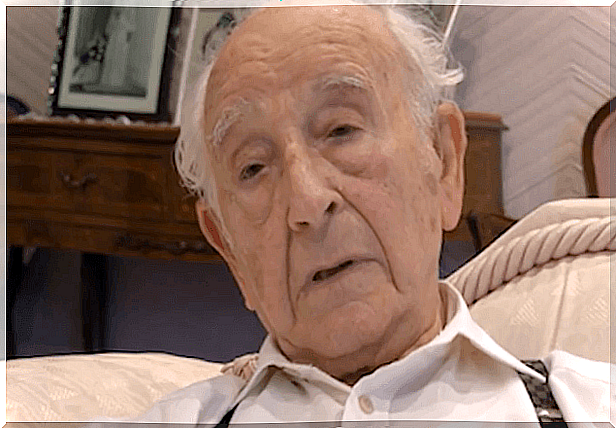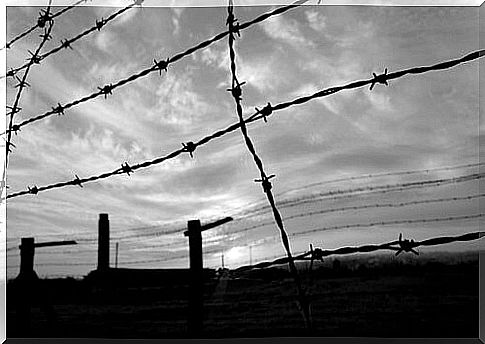Chaim Ferster, Biography Of A Man Who Cheated Death

Chaim Ferster is not a celebrity, nor does he excel in show business or art. However, this 97-year-old man, who breathes health and stopped working alone until he was 92, is a symbol for the whole world. In his own way, he defeated the Nazis and outwitted their sinister plans, not once, but eight times.
Although Chaim Ferster spent the best years of his youth trying to endure the horrors of war, those experiences did not spoil him emotionally. That is perhaps his greatest triumph. He did not survive to evoke the pain and misfortune that he and his family endured, but to rebuild his life, without the shadow of the past interfering.
Chaim Ferster today is a sweet, grateful and wise man. He has told his story hundreds of times, as he is one of the few prisoners in the Nazi concentration camps, who are still alive and can narrate first-hand what happened on those altars of death. He is also a great-grandfather, had a happy marriage that lasted 65 years, and was the founder of a successful company that brought him prosperity.

Chaim Ferster and a dark age
Chaim Ferster was born on July 18, 1922, in the town of Sosnowiec, Poland. His family was Orthodox Jewish and was part of a community that represented approximately 21% of the population at the time. Remember that all of them viewed the progressive rise of Nazism in Germany with fear.
They were not wrong. In 1939, his town was quickly invaded by the Nazis. The Second World War began and anti-Semitism also prevailed. First it was the yellow star on the clothes, the discrimination on the streets and the uncertainty about what was to come. Later, the Jewish ghettos were established. Chaim Ferster was only 17 years old and still remembers the fear that reigned in those years.
The year 1942 was definitive in his life. His father died of pneumonia, because even the most basic medicines were not available in the ghetto. The family was also hampered by the great restrictions to access food. That same year, the Gestapo demanded that his mother and one of his sisters appear before the authorities. He never heard from them again.
The tragedy and the hope
Chaim Ferster and the other Jews realized that when someone was wanted by the Gestapo, their whereabouts were never known again.
Not much was known about the concentration camps. The information circulating was based on hearsay and half-words. At that time, an uncle of his gave him wise advice, which was ultimately going to save his life. He recommended learning an activity that would be useful to the Germans.
Chaim Ferster began learning sewing machine mechanics in the ghetto. It was an excellent choice. In 1943, his time had come. The Gestapo requested him and then sent him to a concentration camp.
At first it was very hard. He was in the fields of Oświęcim, Graditz and Niederorschel. Remember that the captives were forced to repair a road, with a temperature of -25 degrees below zero.
The Nazis, however, realized his technical knowledge and gave him less egregious jobs. That was definitive for him to survive. In Graditz he contracted typhus, as there was an epidemic. Chaim Ferster conjures up a dark image: there were piles of corpses, perfectly organized, with those who had succumbed to the virus.

The Liberation
1945 was approaching when Chaim Ferster was sent to Auschwitz. He says that he arrived at midnight, in the midst of a terrifying silence. There they tattooed his skin with a code and he suffered great humiliations. However, two months later he was referred to Niederorschel, because in that field they were requiring mechanics. For Ferster it was like moving to a resort.
Due to the advance of the Allies, Niederorschel was closed in 1945. All the prisoners were sent to the fearsome Buchenwald camp, a place where collective executions were carried out every day. The Nazis by now knew they were going to lose the war, but before that happened they wanted to wipe out as many Jews as possible.
It was Chaim Ferster’s turn to be executed. As he was leaving for the site of the same, the Allies took the field and released all the prisoners. Then came the return to harsh reality. More than 30 of his relatives had been exterminated. One of his surviving uncles had emigrated to Manchester and Ferster sought him out. There he could start again. He defeated the Nazis because he eventually became a happy Jew.









